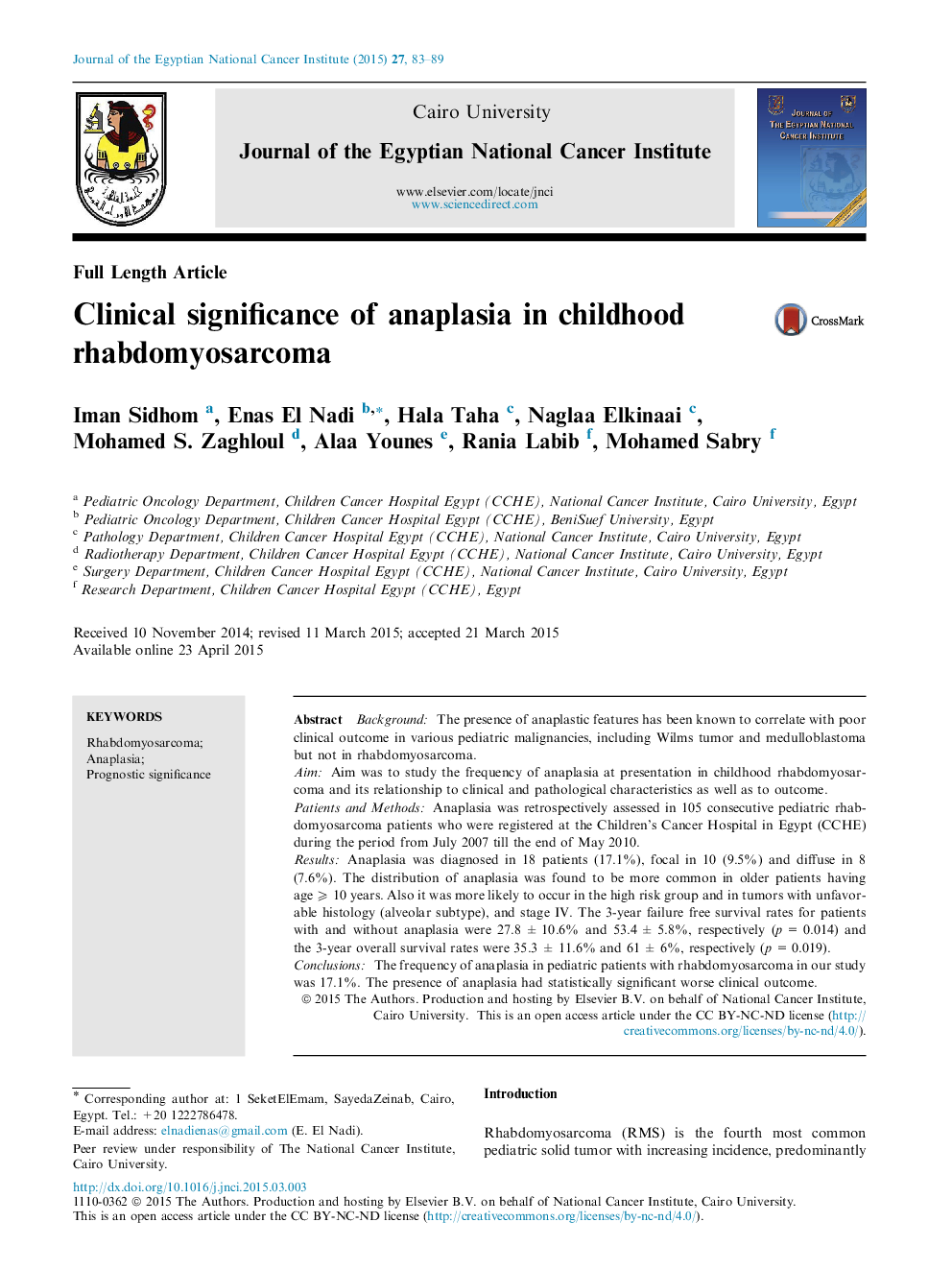| Article ID | Journal | Published Year | Pages | File Type |
|---|---|---|---|---|
| 3988997 | Journal of the Egyptian National Cancer Institute | 2015 | 7 Pages |
BackgroundThe presence of anaplastic features has been known to correlate with poor clinical outcome in various pediatric malignancies, including Wilms tumor and medulloblastoma but not in rhabdomyosarcoma.AimAim was to study the frequency of anaplasia at presentation in childhood rhabdomyosarcoma and its relationship to clinical and pathological characteristics as well as to outcome.Patients and MethodsAnaplasia was retrospectively assessed in 105 consecutive pediatric rhabdomyosarcoma patients who were registered at the Children’s Cancer Hospital in Egypt (CCHE) during the period from July 2007 till the end of May 2010.ResultsAnaplasia was diagnosed in 18 patients (17.1%), focal in 10 (9.5%) and diffuse in 8 (7.6%). The distribution of anaplasia was found to be more common in older patients having age ⩾ 10 years. Also it was more likely to occur in the high risk group and in tumors with unfavorable histology (alveolar subtype), and stage IV. The 3-year failure free survival rates for patients with and without anaplasia were 27.8 ± 10.6% and 53.4 ± 5.8%, respectively (p = 0.014) and the 3-year overall survival rates were 35.3 ± 11.6% and 61 ± 6%, respectively (p = 0.019).ConclusionsThe frequency of anaplasia in pediatric patients with rhabdomyosarcoma in our study was 17.1%. The presence of anaplasia had statistically significant worse clinical outcome.
